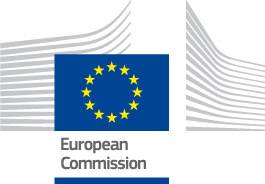The importance of a safe market
date: 21/05/2010
author: Enterprise & Industry online magazine
 Market surveillance helps protect both consumers and businesses from unsafe products, by ensuring that all economic actors stick to the rules. That is why it is so important to the efficient functioning of the EU's single market and the recent entry into force of improved rules on market surveillance is welcome news.
Market surveillance helps protect both consumers and businesses from unsafe products, by ensuring that all economic actors stick to the rules. That is why it is so important to the efficient functioning of the EU's single market and the recent entry into force of improved rules on market surveillance is welcome news.
The free movement of goods, is a cornerstone of the EU's single market. But with freedom comes responsibility. In order to ensure that the products in the market place, including imports from third countries, are safe and comply with all the necessary EU regulations, an efficient market surveillance system needs to be in place.
Although the single market is EU-wide, market surveillance, which constitutes the final step of market control, is a national task, and each Member State is responsible for monitoring the products within its territory - and taking relevant action in the cases of non-compliance.
Despite the widespread harmonisation of safety standards and other requirements for products (e.g. environmental) across the Union, experience has revealed that fairly significant gaps still exist between Member States as regards how these requirements are enforced. This has led to a situation where quite a number of non-conforming products can find their way on to the market, thus resulting, among other things, in the distortion of competition.
A step closer to full harmony
To address these shortcomings, the so-called New Legislative Framework contains measures to strengthen market surveillance and seeks to ensure that consumers across the EU enjoy a similarly high level of protection. A specific 2008 EU Regulation sets out the general conditions for market surveillance across Europe. It became applicable in January 2010. This Regulation is complemented by a Decision on a common framework on the marketing of products, which contains another set of measures aiming to ensure that only safe and compliant products make it on to the market.
Both instruments seek to reinforce national market surveillance instruments, ensure a more coherent level of intervention and controls throughout the single market, guarantee the equal treatment of non-compliant products across Europe, protect fair economic operators from unfair 'black sheep' competition, and boost confidence in the CE marking (see box).
The Regulation outlines the tasks of Member States vis-à-vis market surveillance: national surveillance authorities monitor and inspect the goods placed on their market regularly and take action to ensure the compliance or removal of non-compliant products. In addition, they can impose sanctions on offenders that are proportionate to the severity of the infringement. Over and above this, Member States must implement and periodically update their market surveillance programmes and review and assess the functioning of their surveillance activities at least every four years.
In addition, the Regulation obliges Member States to carry out checks on goods imported from outside the EU because not all of them meet the standards of the single market and, so, it is most effective to filter out non-compliant imports at the border before they enter the Union.
The Decision lays down the obligations for business. Every actor in the distribution chain has to play its role in making sure that only safe products are sold. Furthermore, the Decision ensures that each product can be traced back from every distributor to its manufacturer or importer into the EU. This information is crucial for authorities to stop further deliveries of unsafe products quickly.
Co-operation and rapid alert
That said, no Member State is an island, figuratively speaking, and successful market surveillance requires effective cross-border co-operation between market surveillance authorities, given the fact that goods can move quite freely in the single market.
The new Regulation enhances the effectiveness of this co-operation, which involves the exchange of information and know-how, as well as the pooling of resources: the co-operation mechanism now enters into play whenever national authorities find a dangerous product.
Accordingly, the EU has built upon an important tool through which all Member States share information on non-compliant products: RAPEX, the EU's rapid alert system that already covered consumer products, has been extended to goods for professional users. It ensures that information about dangerous products withdrawn from the EU market and/or recalled from consumers is quickly circulated between Member States and the European Commission, with the aim of preventing or restricting the sale of these products on the market.
A mark of conformity
The arch-shaped 'C' and 'E' that adorn many products are familiar to millions of EU consumers. This CE marking means that the product in question conforms to all the relevant safety, health, environmental and other requirements outlined in harmonised EU legislation.
All products for which EU-wide requirements exist and provide for CE marking must carry the CE label. These include computers, phones, toys and electrical products. Of course, there are product groups that are not required to carry the CE marking, such as automobiles.
